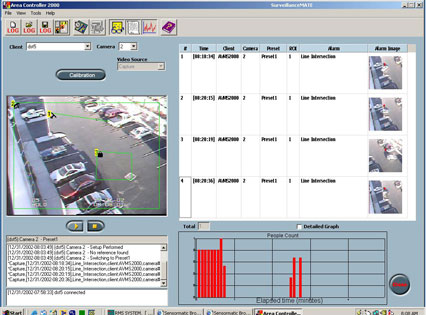|
… what Building Automation needs! |
John J.
"Jack" Mc Gowan, CEM |
AutomatedBuildings.com
|
[an error occurred while processing this directive] |
|
… what Building Automation needs! |
John J.
"Jack" Mc Gowan, CEM |
Those who have been in the control business long enough to remember how dramatically the 1970's oil crises impacted the industry, will not find the term "black box" to be a new one. The term had a negative stigma associated with it in the late 1970's and early 1980's. Easy access to microprocessor technology at that time made it possible for controllers, often called black boxes, to flood the market, and many of those devices failed to meet expectations. The reasons for this included: hardware, poor documentation and support, and / or software, the owner had no idea what was programmed, how to change it or to improve sequences, etc. Some combination of these issues led to a poor impression of these black boxes, however, a recent article in the New York Times made it clear that the term could actually bring a positive connotation in today's automation business. The article pointed out that automobile companies are beginning to apply "black box recorders" like the airlines do, to allow for investigators to determine the events prior to an accident. How soon before the collision did the drive hit the brakes? If Global Positioning Satellite (GPS) technology is available, it may even be possible to pinpoint the location of each car approaching the impact, etc. So here is an idea, there is nothing that these black boxes in airliners are capable of that a Building Automation Systems can't provide for buildings. Why not use that to sell automation to management? Even more exciting is that total integration of HVAC, Access and Video Surveillance, can further enhance the capability of a Building Automation System to become a tremendous investigation tool.
|
[an error occurred while processing this directive] |
 The
Marketing Opportunity
The
Marketing Opportunity
Building Automation Black Box Recorders could be an owner's best option for protecting occupants and equipment in facilities, in addition to saving energy cost and ensuring comfort. Building Managers and Integrators can demonstrate to decision-makers how this technology can duplicate the same degree of forensic data that is available from airline-type black box recorders, for building issues. This may be an excellent opportunity to educate building owners to the benefits of Integration, by showing the value of having this facility data in a central repository.
The Integration Story
System Integration has been growing in popularity over the past decade. With standardization of data communication for control systems and rapid advances in Internet-based technology, total building integration is available now. A study from SDM Magazine was the subject of an article last fall documenting that this industry has grown to a least $2.4 billion in sales per year. Integrators, who have demonstrated both cost benefits and system function improvements available from Integration, drove much of this growth. Yet automation and integration can still be a hard sell to management. Given this new concept of using a black box for "building forensics" maybe there is an added benefit to help get management to fund these systems.
The value of information has become more and more clear in business over the past decade and building data offers some real benefits. The "black box" concept makes sense given that there are a host of risks associated with operating a building, and integrated systems can help owners to control those risks. First consider the types of data are available from an airline flight recorder. These "recorders", or black boxes, initially provided an aural record of events in the cockpit including all of the conversations between pilot and copilot, etc. More recent devices reportedly record voices as well as data from instruments such as: air speed, altitude, geographic coordinates, etc. The next question is, what type of data would be useful to building owners and why?
Building Automation Black Box Benefits
Consider again this concept of building risk as the basis for discussing benefits of this technology. Brainstorming could identify an infinite number of benefits to this concept, but in the interest of space, three examples will be discussed here: human health, theft and personal safety. Integration can help address human health issues in many ways, but one great example is indoor air quality (IAQ). IAQ has been a major issue over the past decade or so, and many building owners have used automation systems to address the issue. First and foremost it is possible to control HVAC equipment more effectively and optimize ventilation via automation systems. It is also possible to take advantage of automation logging to document building conditions and create a defense against spurious lawsuits claiming sick building syndrome.
 Theft
and loss prevention are also big issues for buildings, and integrating security
into automation systems can be of value to impact this in two ways. Security
systems can control access to the facility, allowing only authorized persons to
get into the building and therefore preventing losses. There are several new
technologies to improve access control technology, including biometrics, which
use finger or hand shape, fingerprints, etc., to replace cards are other devices
that can be lost or stolen. The integration of Web-based Video Surveillance
enhances this risk prevention by allowing for quick response to intruders. This
is more than a security system that sends an alarm, it is a real-time
interactive tool to both detect intrusion and implement strategies to avoid
risk. In addition to capturing streaming video of intruders, there is a new
feature available, called "differentiated pixelation" by the MATE
system shown here. The industry at large is using the term machine language to
identify these visual alarm features. As seen in the screen image, it is
possible to set up protected areas or boundaries by imposing "trip
wires". The trip wires in green are within a field of camera vision, and an
alarm will be set off if one pixel changes within the enclosed area or if the
wire is crossed. This software can even be configured to provide a facial
recognition feature. Owner's can have 24, 7 monitoring over the Internet and get
rapid response to alarms thus allowing them to prevent losses.
Theft
and loss prevention are also big issues for buildings, and integrating security
into automation systems can be of value to impact this in two ways. Security
systems can control access to the facility, allowing only authorized persons to
get into the building and therefore preventing losses. There are several new
technologies to improve access control technology, including biometrics, which
use finger or hand shape, fingerprints, etc., to replace cards are other devices
that can be lost or stolen. The integration of Web-based Video Surveillance
enhances this risk prevention by allowing for quick response to intruders. This
is more than a security system that sends an alarm, it is a real-time
interactive tool to both detect intrusion and implement strategies to avoid
risk. In addition to capturing streaming video of intruders, there is a new
feature available, called "differentiated pixelation" by the MATE
system shown here. The industry at large is using the term machine language to
identify these visual alarm features. As seen in the screen image, it is
possible to set up protected areas or boundaries by imposing "trip
wires". The trip wires in green are within a field of camera vision, and an
alarm will be set off if one pixel changes within the enclosed area or if the
wire is crossed. This software can even be configured to provide a facial
recognition feature. Owner's can have 24, 7 monitoring over the Internet and get
rapid response to alarms thus allowing them to prevent losses.
[an error occurred while processing this directive]Personal safety is also enhanced through Integration of Web-based Video Surveillance because rapid response can prevent injury. Another integration feature is that the automation system can also turn on lights inside and out on alarm to assist law enforcement when they arrive. There is nothing more undesirable than to walk into a dark building within an alarm sounding. However, there is also a preventative side of this technology. Occupants can call a Monitoring Center and ask the operator to look out into the parking lot before they go to their car. The operator can tell them if all is clear, and even better, with the overlay of Web-based audio speakers the operator can talk to that person while he or she walks to the car. The operator can even tell a would-be assailant that they are being monitored and the police have been called.
My company is integrating all of these types of systems in a wide variety of applications and the owners now see how the "black box" forensic abilities of these systems can aide in controlling risk and avoiding negative events. Creating a safe and secure environment can have a great positive impact on the occupants in the space, for example a tenant might chose to office in a building that offers these benefits over one that does not. In the worst case, this information also provides invaluable data to prosecute intruders or to protect the building owner against litigation. The ultimate benefit is available by integrating these systems into the Real-time Energy Dashboard™, which was the subject of an earlier column. Capturing this data is valuable, but integrating data from multiple systems and making it available in a real-time fashion is the real future of Building Automation. Maybe the term black box really isn't negative anymore for Building Automation.
________________________________________________________________________
ABOUT THE AUTHOR
John J. "Jack" Mc Gowan, CEM is author and President of Energy Control Inc., an Energy Service Company and System Integrator. Mc Gowan has worked on numerous multi-million dollar projects in every capacity from design through financing as an end user and ESCO. He has published 5 books including "Direct Digital Control" on Fairmont Press. The Association of Energy Engineers named him 1997 "International Energy Professional of the Year", and he is listed in Who's Who in Science and Engineering, Millennium edition, Marquis Press. Mc Gowan sits on the Energy User News Technical Advisory Board and is a Contributing Editor with www.Automatedbuildings.com.
[an error occurred while processing this directive]
[Click Banner To Learn More]
[Home Page] [The Automator] [About] [Subscribe ] [Contact Us]